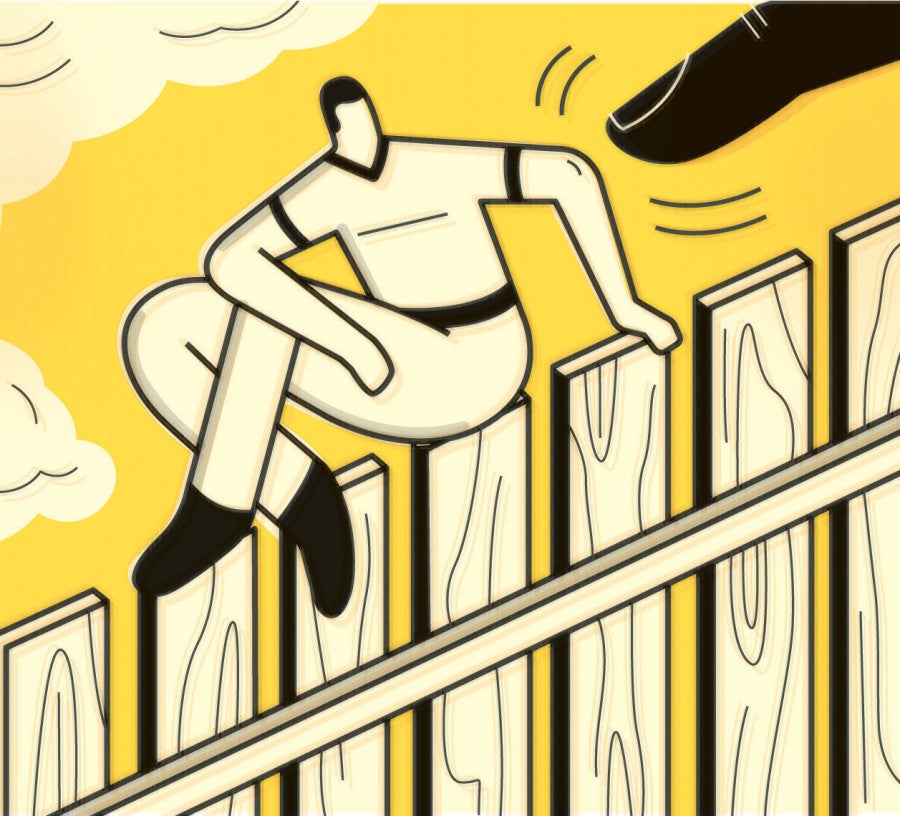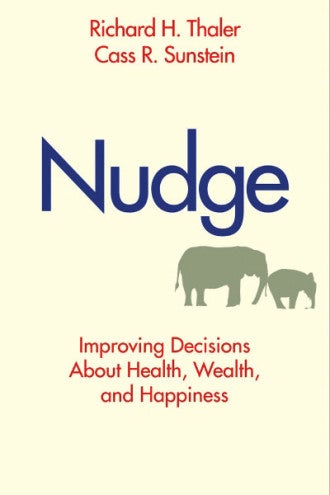
Faced with important decisions about their lives, people often make pretty bad choices—choices they would not have made if they paid full attention and possessed complete information, unlimited cognitive abilities, and complete self-control.
To take just one example, many people never get around to joining their employer’s retirement savings plan, even when it is heavily subsidized.
The explanation, according to Harvard Law School Professor Cass Sunstein ’78 and University of Chicago economist Richard Thaler, is rooted in some well-documented human behavioral quirks that are amplifed by information-overload. And, busy people trying to cope in a complex world can’t always afford to think deeply about every choice they have to make.
Sunstein and Thaler have spent a lot of time thinking about how people can be encouraged to make better decisions, and they offer some intriguing ideas in a new book, “Nude: Improving Decisions About Health, Wealth, and Happiness” (Yale 2008). Their central thesis: People will make better choices if they are given a clear and well-designed set of options that acknowledge and offset human idiosyncracies. Designing these options is what the authors call “choice architecture.”
“Choice architects have the responsibility for organizing the context in which people make decisions,” Suntein and Thaler write. The best choice architecture must take into account what behavioral science has taught us about ourselves.
Consider, for example, an energy use study involving three hundred households in San Marcos, California. When all of the households were informed about how much energy they and their neighbors had used in previous weeks, the above-average energy users significantly decreased their consumption. What’s more, when their usage reports included a frowning-face emoticon, their subsequent energy use went down even more. Conversely, a smiling emoticon seemed to prevent under-users from feeling that they were entitled to use more.
“One of the best ways to help people improve their performance is to provide feedback,” write the authors. “Well-designed systems tell people when they are doing well and when they are making mistakes.” And, as the San Marcos energy-use example also shows, “people are sometimes much affected by learning the practices of others.”
Choice architecture should also acknowledge that many people will take whatever option requires the least effort. “Human beings will often consider required choice to be a nuisance or worse, and would much prefer to have a good default,” the authors write. “And, these tendencies toward doing nothing will be reinforced if the default option comes with some implicit or explicit suggestion that it represents the normal or even the recommended course of action.”
In addition to anticipating these tendencies, choice architects should help people to improve their ability to map and hence to select options—to make the information about various options more comprehensible. They should also consider building incentives into their designs.
But for Sunstein and Thaler, understanding what makes for better choice architecture is just a predicate to a broader goal: encouraging choice designs that will nudge people in beneficial directions but without taking away their freedom of choice.

“A nudge … is any aspect of the choice architecture that alters people’s behavior in a predictable way without forbidding any options or significantly changing their economic incentives,” they write. “To count as a mere nudge, the intervention must be easy and cheap to avoid. Nudges are not mandates. Putting the fruit at eye level [in a school cafeteria line] counts as a nudge. Banning junk food does not.”
Sunstein and Thaler acknowledge that nudges are paternalistic, but their saving clause here is their insistence on retaining freedom of choice. “We welcome you to our new movement: libertarian paternalism.”
The libertarian aspect, they say, lies in the straightforward insistence that, in general, people should be free to do what they like—and to opt out of undesirable arrangements if they want to do so. “The paternalistic aspect lies in the claim that it is legitimate for choice architects to try to influence people’s behavior in order to make their lives longer, healthier and better.”
Much of “Nudge” is spent exploring possible applications of this kind of choice architecture to a variety of subjects, from investment and savings plans to health care. The hope, say Sunstein and Thaler, is that their libertarian-paternalistic approach will offer a genuine “Third Way” as an alternative to the political gridlock of the liberal-conservative divide.
There are already some encouraging signs. “Many Republicans are now seeking to go beyond simple opposition to government action,” the authors note. “[T]here is all the difference in the world between senseless opposition to all governmental intervention as such and the sensible claim that when governments intervene, they should usually do so in a way that promotes freedom of choice.”
In a similar vein, many Democrats have come to agree that freedom of choice is a good and even indispensable foundation for public policy. Barack Obama ’91 has embraced the ideas in “Nudge,” and incorporated some of them in his platform.
Sunstein and Thaler are especially heartened by the enthusiastic interest of Britain’s Conservative Party leader, David Cameron, who stands a good chance of becoming the next prime minister. In July, British newspapers reported that “Nudge” topped Cameron’s list of summer reading for political leaders, and that Cameron, whose policy team met with Thaler, had embraced the book for illustrating how governments can coax citizens into making better choices.“By seizing on ‘Nudge,’” said The Guardian newspaper, “the Tory party has projected itself as being the one with the fresh ideas.”
Note: See the links below for more of what people are saying about “Nudge”…